January 27, 2017, 2:06 pm
[First posted in AWOL 7 March 2010. Updated 27 January 2017] International Journal of Conservation SciencePrint ISSN: 2067-533X
Online ISSN: 2067-8223
![http://www.ijcs.uaic.ro/img/top.png]()
The International Journal of Conservation Science (IJCS) is a high quality peer-reviewed journal devoted to the publication of original research papers in applied conservation science and its broad range of applications.
The topics cover all disciplines and branches of modern scientific conservation, including different aspects on general conservation theory, scientific investigation of works of art, authentication, determination of conservation state, compatibility studies for preservation and restoration procedures and monitoring of interventions effectiveness, etiopathology of historic and natural monuments, studies on the mechanisms of deterioration and degradation for different materials as structural and ornamental elements, impact of the environmental factors or agents on monuments and ecosystems, obtaining and characterization of new materials and procedures for preservation and restoration, new methodologies for scientific investigation, cross-related problems concerning research applied to conservation science.
Review articles in selected areas are published from time to time.
ARCHIVE
| Volume 7 2016 | | ![a]()
Special
Issue 1 | | | ![a]()
Special
Issue 2 | ![a]()
Issue 4,
December |
| Volume 7 2016 | | ![a]()
Special Issue 1 | | | ![a]()
Special Issue 2 |
| Volume 6 2015 | | | | ![a]()
Special Issue | ![a]()
Issue 4, December |
| Volume 5 2014 | | | | ![a]()
Issue 4, December | |
| Volume 4 2013 | | | ![a]()
Issue 3, September | ![a]()
Issue 4, December | ![a]()
Special Issue |
| Volume 3 2012 | | | | |
|
| Volume 2 2011 | | | | |
|
| Volume 1 2010 | | | | |
|
|
↧
↧
January 28, 2017, 6:20 am
[First posted in AWOL 30 April 2012, updated 28 January 2017] FOLD&R (Fasti On Line Documents & Research)ISSN: 1828-3179 (Italy Series)ISSN: 2412-5229 (Conservation Series) ![folder_cover]()
FOLD&R is an archaeological journal published since 2004 by the International Association for Classical Archaeology in collaboration with the Italian Ministry for Cultural Heritage and Activities.
The journal is dedicated to the proposition that reports on all excavations should be easily available to the general public. It is a peer-reviewed journal, with an editorial board that covers all of the archaeological disciplines. We welcome illustrated submissions, in English, Italian, French, Spanish or German, on recent Italian excavations or geophysical or surface surveys of individual sites. We guarantee a rapid review of the material, which, after any agreed changes, should be published within a month. Two sets of proofs will be submitted for correction by the authors. The reviewers are asked to address the scientific validity and presentation of the submission rather than the scale or importance of the excavation; all excavations are important. No translation is offered, but we are willing to advise on translators for anyone who wishes to publish their text in another language.
An on-line journal follows the same rules as those on paper from both an academic and a juridical point of view. Publications on FOLD&R are thus valid from the point of view of a personal curriculum and should be cited just like other publications. The law protects the intellectual property of the author and the journal. Texts are published in a pdf format, and they can be consulted online, with Acrobat Reader, and downloaded for printing and circulation to colleagues. Texts can be republished by their authors (although only by the authors) without permission from the review; however, we request that the first publication be credited to FOLD&R.
Texts and illustrations, in colour or black and white, should be sent to Helga Di Giuseppe, Piazza San Marco 49, Rome 00186 (tel. 39-06 68683399), or by email to helga.digiuseppe@aiac.org, The illustrations may be sent either as digital or paper files. If the site in question is not already part of the Fasti Online it must be accompanied by a completed Record Sheet
We will register each FOLD&R article at the CNR central library, the Biblioteca Centrale “G. Marconi”, that has established a database, SOLAR, which registers the deposition of digital scientific publications. Registration and certification by the CNR guarantees the author and the preservation of the work. We assume that the authors of submissions will authorize the deposition of their texts. The authors will receive, via email, the certificate of deposition, which can be annexed to their own FOLD&R for distribution.
FOLD&R Italy
The 5 most recently published FOLD&Rs
373 - Emiliano Cruccas, Romina Carboni. 2017. Indagini archeologiche dell’Università degli Studi di Cagliari a Nora (CA) Progetto Isthmos - Campagne di scavo 2015-2016 . PDFpermalinkRecord Sheet372 - Giulia Lodi. 2016. Testimonianze materiali dal territorio di Ariano Ferrarese (proprietà “Il Gombito”, Mesola - Ferrara). Alcuni casi di studio: anfore, lucerne, vasi potori a pareti sottili . PDFpermalinkRecord Sheet371 - Roberto Perna, Gianfranco Paci. 2013. Una villa romana nel territorio di Pollentia-Urbs Salvia: Note preliminari sulle indagini archeologiche condotte presso Villa-magna (Urbisaglia – MC) Investigations at Monte Palazzi (Passo Croceferrata, Grotteria, Calabria) and in the Locrian chora in 2010-2012. PDFpermalinkRecord Sheet370 - Elisa Zentilini, Marcella Giulia Pavoni , Valeria Grazioli, Patrizia Basso – Università degli Studi di Verona - Dipartimento TeSIS. 2016. La via Claudia Augusta: recenti indagini archeologiche dell’Università di Verona a Gazzo Veronese (Verona) . PDFpermalinkRecord Sheet369 - Francesco Belfiori . 2016. “Archeologia urbana a Senigallia” IV. I riti del costruire di Sena Gallica . PDFpermalinkRecord Sheet
FOLD&R Archaeological Conservation Series
The 5 most recently published FOLD&Rs4 - Alaa el Habashi, Tarik Moujoud, Abdessalam Zizouni. 2016. The Conservation and Reconstruction of the Islamic Bath at Volubilis, Morocco. PDFpermalinkRecord Sheet3 - Stefano De Caro. 2015. Excavation and conservation at Pompeii: a conflicted history.. PDFpermalinkRecord Sheet2 - Michele Asciutti. 2015. Restauro, riqualificazione e valorizzazione di aree di scavo archeologico: Valle del Colosseo/Palatino nord-orientale . PDFpermalinkRecord Sheet1 - Sergio Palladino, Laura Bottiglieri. 2015. Ricostruzione e restituzione tridimensionale del corridoio e del viridarium della domus dei Valerii sul Celio, dagli scavi nell’Ospedale dell’Addolorata. PDFpermalinkRecord Sheet
↧
January 28, 2017, 12:50 pm
[First posted in AWOL 9 December 2009. Updated 28 January 2017]Etruscan News![Center for Ancient Studies]()
The American section of the Institute for Etruscan and Italic Studies (Instituto di Studi Etruschi ed Italici) is housed at NYU under the auspices of the Center for Ancient Studies. For further information or to subscribe to the newsletter of the American section, please contact:
Professor Larissa Bonfante
Etruscan News
Classics Department
New York University
100 Washington Square, Room 503
New York, NY 10003
Please download Etruscan News:
To access the Index for Etruscan News 1-14 (2002-2012), please click here.
↧
January 29, 2017, 5:54 am
Project VolterraThe Projet Volterra was established in honour of the memory of the distinguished Roman lawyer Edoardo Volterra (1904-1984), whose widow left his substantial and rich collection of Roman law books to the École Française de Rome. A catalogue of the older items, with reminiscences by relatives and colleagues, has now been published by Douglas Osler as vol. 3 in the series Bibliographica Iuridica(Frankfurt-am-Main, 2006). The general aims of the Projet Volterra are to promote the study of Roman law in its full social, political and legal context.
The first phase of this project in Britain (Volterra I) ran from 1995 to 2004, based in the UCL History Department, being initially funded by the British Academy and then by the Arts and Humanities Research Council. Entitled 'Law and Empire AD193-455', it focused on later Roman imperial legal pronouncements and its primary output was an on-line searchable database of all imperial pronouncements in Latin from the late second to mid-fifth centuries. Although this phase is now finished, its product is a 'living database' that continues to be up-dated and maintained courtesy of periodic funding from the British Academy, which adopted the Projet Volterra in 2005 as one of its long term research projects.
The second phase of the project, entitled 'Law and the End of Empire' (Volterra II), started in September 2005. This comprises two five-year research projects funded by the Arts and Humanities Reseach Council (2005-2010, 2011-2015), and it continues to be based at UCL History. It carries on chronologically from where Volterra I left off. Based on a thorough analysis of the surviving texts and their transmission, the aim of this phase of the project is to produce a history, with supporting database and on-line resources, of the law (Roman, Germanic or ‘barbarian’, and ecclesiastical) in all its aspects in continental Europe between the end of the Roman Empire in the west and the Carolingian period.
The team working on the project initially comprised Professor Michael Crawford and Dr Benet Salway, based in the Department of History at University College London, where they were joined by Dr Simon Corcoran in 1999. The team was augmented by Dr Magnus Ryan, Faculty of History and Peterhouse, Cambridge for the first part of Volterra II (2005-2010).
Three papers from the Colloquium held at the Senate House, University of London, in March 2004, together with a general introduction to the Projet Volterra, were published in November 2007 in the Bulletin of the Institute of Classical Studies49 (2006) pp. 214-254.
↧
January 29, 2017, 6:05 am
[First posted in AWOL 12 August 2011, updated 29 April 2017] Roman Law ResourcesErnest Metzger, University of Glasgow School of Law
![http://iuscivile.com/img/banner.gif]()
This site provides information on Roman law sources and literature, the teaching of Roman law, and the persons who study Roman law. The site is available in English and German. Users are invited to submit to this site any materials or information which might interest other users.
↧
↧
January 29, 2017, 4:09 pm
PROGETTO "OIKEIÔSIS"![]()
In questo sito viene pubblicata, a puntate, latraduzione cooperativa dellaEpistula ad Lucilium121 di Seneca,che verte sulla teoria stoica della ‘appropriazione’(in greco, oikeiôsis) degli animali, ovvero quel processo secondo il quale ogni essere vivente si 'appropria' della propria esistenza e comincia a percepire la propria costituzione fisica, nonché gli elementi che sono ad essa utili o dannosi. L'Epistula 121, in questo senso, è da considerarsiun importante punto di partenza per chiunque voglia studiare e comprendere le ‘teorie della mente animale’ in seno allo stoicismoe, al contempo, per formarsi un primo orientamento sul dibattito relativo all'intelligenza degli animali che ha infiammato le scuole filosofiche in età imperiale.
Gli argomenti di questo dibattito, peraltro, presentano alcune consonanze (che meritano di essere analizzate a partire dagli strumenti della comparazione culturale)con quelli oggi messi in campo nell'ambito della psicologia cognitiva, delle neuroscienze, dell'etologia e della filosofia del linguaggio contemporanee.
↧
January 30, 2017, 8:28 am
Thesaurus d'Epigraphie Islamique![Bannière de Epigraphe]()
Le projet du Thesaurus d’épigraphie islamique a pour ambition de réunir toutes les inscriptions arabes, persanes et turques, voire dans d'autres langues du monde musulman, jusqu'à l'an 1000 de l'hégire, c'est-à-dire du Moyen Age.
Le Thesaurus d’Epigraphie Islamique s’inscrit dans la lignée du Répertoire Chronologique d’Epigraphie Arabe tout en étant indépendant. En effet, le projet actuel ne tient pas compte seulement des inscriptions arabes mais également persanes et turques, voire d’autres. En outre, les avantages informatiques ont permis une nouvelle présentation de fiche-type ainsi qu’une précision accrue dans l’enregistrement et surtout dans la consultation des données. La Fondation Max van Berchem de Genève a bien voulu accepter la sponsorisation du projet qui a été officiellement mis en route en février 1992.
La base de données étant informatisée, on peut facilement imaginer que les premiers pas n’étaient pas simples, «l’universalité» du système informatique n’ayant pas été, à l’époque, encore achevée (problème des caractères latins diacrités, des caractères “neutres“ dans l’écriture arabe, compatibilité entre Macintosh et PC, etc.). Dès le début, la saisie des inscriptions se fait sur l’ordinateur Macintosh et le logiciel utilisé pour l'élaboration de la base est le logiciel “4ème dimension»(ou “4D“), sous ses différentes versions successives. C’est ainsi que nous sommes passés, non sans mal, par plusieurs systèmes informatiques différents. La diffusion se faisait, à partir de 1998, sous formes de CD-Rom,t puis de DVD-Rom, chaque nouveau disque comprenant une (éventuellement deux ou trois) nouvelle livraison incluant les inscriptions d'une nouvelle région. Le découpage géographique suivi est présenté plus bas, dans la section 5/ des présentes notices.
Depuis le mois d’octobre 2011, c’est à dire depuis la 10ème livraison, la base est disponible, gratuitement, sur Internet. Deux ou trois livraisons à venir vont inclure les régions manquantes et il sera ainsi prochainement possible, au bout d’un long chemin, de consulter l'ensemble des inscriptions musulmanes du moyen âge!
Le projet ne va pas s’arrêter là. La base sera régulièrement enrichie et complétée et tous les deux ans environ, une livraison actualisée, sur le plan scientifique comme sur le plan informatique, va remplacer la livraison précédente.
Nous souhaitons susciter, pour les différentes régions comme pour l’ensemble du projet, des collaborations effectives qui vont continuer à être reconnues dans la section 7/ Remerciements.
- 1 PRÉSENTATION DU PROJET
- 2 A PROPOS DES AUTEURS
- 3 PRISE EN MAIN
- 4 GUIDE ABRÉGÉ DE LA BASE
- 5 DÉCOUPAGE GÉOGRAPHIQUE
- 6 BIBLIOGRAPHIE DES ARTICLES PRÉSENTANT LE THESAURUS
- 7 REMERCIEMENTS
- 8 COMMENT CITER LE THESAURUS ?
- 9 CONTACTS
↧
January 30, 2017, 8:35 am
[First posted in AWOL 21 February 2012. Updated 30 January 2017]Bulletin de Correspondance Hellénique (at Persée) [Accessible also at
CEFAEL]
eISSN: 2241-0104
![thumbnail]()
Successeur du Bulletin de l’École française d’Athènes, le Bulletin de Correspondance Hellénique est édité depuis 1877. Publié en plusieurs livraisons annuelles, le BCH rassemble des études sur l’Antiquité et des chroniques de fouilles et de découvertes archéologiques faites en Grèce et à Chypre.
↧
January 30, 2017, 1:26 pm
GlobalXplorer°GlobalXplorer° is an online platform that uses the power of the crowd to analyze the incredible wealth of satellite images currently available to archaeologists. Launched by 2016 TED Prize winner and National Geographic Fellow, Dr. Sarah Parcak, as her “wish for the world,” GlobalXplorer° aims to bring the wonder of archaeological discovery to all, and to help us better understand our connection to the past. So far, Dr. Parcak’s techniques have helped locate 17 potential pyramids, in addition to 3,100 potential forgotten settlements and 1,000 potential lost tombs in Egypt — and she's also made significant discoveries in the Viking world and Roman Empire. With the help of citizen scientists across the globe, she hopes to uncover much, much more. This is just the beginning. With additional funding, Dr. Parcak aims to revolutionize how modern archaeology is done altogether, by creating a global network of citizen explorers, opening field schools to guide archaeological preservation on the ground, developing an archaeological institute, and even launching a satellite designed with archaeology in mind.
So far, Sarah’s methods have proved over 90% successful in producing significant discoveries.
↧
↧
January 30, 2017, 1:50 pm
↧
January 31, 2017, 5:17 am
Arma: Newsletter of the Roman Military Equipment ConferenceISSN 0960-9172
![[Arma Mars logo]]()
Arma is the newsletter of the Roman Military Equipment Conference (ROMEC) which, since 1983, has met to discuss the arms, armour, and military fittings of the Roman army. The proceedings of these volumes have been published (four of them by British Archaeological Reports) but Arma now provides an opportunity for the publication of short notes on recent finds, news of relevant publications, and a running bibliography of academic articles published on the subject since 1980. The newsletter also supplies details about forthcoming events, including of course the next ROMEC. Of interest to specialists and enthusiasts alike, as well as unit and museum staff, and academics working in related fields, Arma offers the chance to keep up-to-date with Roman military equipment studies.
Several early volumes are available online, the remaining volumes Table of contents only
Volume 1 (1989) 33pp
Part 1
Download as a PDF
- Editorial [1]
- The next ROMEC [2]
- Forthcoming ROMEC proceedings [2]
- Archaeological illustration [2]
- Recent publications [2-3]
- Last chance books [3]
- Reconstruction societies [3]
- Books, posters, and postcards [3-4]
- New finds [4]
- Bibliographies [4]
- Bibliography of Roman military equipment since 1980 [4-8]
- The Joint Expedition to the Roman Provinces of the Danube M.C. Bishop [8-9]
- Work in Progress [9-10]
- Roman sling-shot W.B. Griffiths [9]
- Roman Corbridge M.C. Bishop [10]
- Notes [10-14]
- Nielloed studs Lindsay Allason-Jones [10-11]
- A new mail hook M.C. Bishop [11]
- Belt fittings in Buxton museum M.C. Bishop[11-13]
- A Republican gladius [13]
- References [13-14]
- Subscription; notes for contributors; next issue; list of subscribers (individuals, institutions); editorial board contact addresses [14-16]
Part 2
Download as a PDF
- Editorial [17]
- ROMEC 1 [18]
- The next ROMEC [18]
- The Roman Finds Group [18]
- A circular shield cover C. van Driel-Murray [18-19]
- Recent publications [19]
- Notes on the carriage of the gladius Michael Simkins[19-20]
- The composition of some copper alloy artefacts from Longthorpe M.C. Bishop [20-4]
- Bibliography of Roman military equipment since 1980 [24-6]
- Papers (part 2) [24-5]
- Reports (part 1) [25-6]
- Roman cavalry [26]
- Work in progress [26]
- A catalogue of Roman military equipment from London [26]
- Military equipment from Lejjun Sonja Jilek[26-7]
- Copper alloy beltplates from Britain T.G. Padley & P.M. Cracknell [27-8]
- A note on Roman infantry roles J. Davison[28-9]
- References [29]
- Subscriptions; notes for contributors; next issue; list of subscribers; editorial board contact addresses [29-33]
Volume 2 (1990) 34pp
Part 1
Download as a PDF
- Editorial [1]
- 7th ROMEC, Magdalensburg M.C. Bishop [2]
- The next ROMEC [2]
- A new journal [2-3]
- Any Republican equipment? [3]
- Roman cavalry march in Britain cancelled Dan Peterson[3-4]
- Bibliography of Roman military equipment since 1980 [4-5]
- Indicium [5]
- Reconstruction group update Dan Peterson [5-7]
- Significant Roman military finds from flea markets in Germany Dan Peterson [7-10]
- A decorated dagger scabbard from Corbridge, Northumberland M.C. Bishop [11]
- Lorica 'segmentata'? Michael Simkins [11]
- What is it? [12]
- Work in progress [12]
- Roman scale armour J.B. Clemetson [12]
- Subscriptions; notes for contributors; list of subscribers; editorial board contact addresses [12-15]
Part 2
Download as a PDF
- Editorial [17]
- The face of battle [18]
- Special offer subscriptions [18]
- Some new equipment from Germany [18]
- The Roman Finds Group [19]
- Slides and posters [19]
- Limesritt 90: continuing experiments with the Roman saddle Dan Peterson [19-21]
- Bibliography of Roman military equipment since 1980 [21]
- Down to earth: a note on bolt-heads and rake-prongs W.J.H. Willems [22-3]
- The manica lamminata Michael Simkins [23-6]
- Military equipment from Romano-British caves Martin J. Dearne [26-8]
- Two cavalry fittings from Castleford, West Yorkshire M.C. Bishop [28-31]
- A crest-box support and niello-inlaid belt-plate from Italy Dan Peterson [31-2]
- Subscriptions; notes for contributors; list of subscribers; editorial board contact addresses [32-4]
Volume 3 (1991) 28pp
Part 1
Download as a PDF
- Editorial [1]
- A hoard from Belgium [2]
- Back issues [2]
- Two representations of 3rd century AD equipment from Cumbria J.C.N. Coulston [2-4]
- Bibliography of Roman military equipment since 1980 [4-5]
- The Nijmegen helmet and an unusual umbo H. Brunsting and D.C. Steures [5-6]
- The fascia ventralis: a follow up Peter de Haas[6-8]
- The fastening of the gladius to the belt in the Early Empire Peter Connolly [8-9]
- Evidence for the production of Roman military equipment Liviu Petculescu [9-10]
- Rescript [10]
- Mystery objects [10-11]
- A wooden training sword and the so-called practice post from Carlisle Ian Caruana [11-14]
- Next issue [15]
- Subscriptions; notes for contributors; editorial board contact addresses [15]
Part 2
- Editorial [17]
- ARMA and JRMES [18]
- Reconstruction societies [18]
- The men in the iron masks [18-19]
- Current research W.B. Griffiths [19]
- Recent publications [19]
- Bibliography of Roman military equipment since 1980 [19-20]
- Papers (Part 6) [19]
- Reports (Part 4) [19-20]
- Zu den römischen Funden von Sursee-Zellmoos Elisabeth Ettlinger [20-1]
- A military pendant from Milton Keynes Jo Mills[21-2]
- Early Roman horse gear from Velsen 1 A.V.A.J. Bosman[22-5]
- Damage and complaints [25]
- Subscriptions; notes for contributors; list of subscribers; editorial board contact addresses [25-8]
Volume 4 (1992) 24pp
Part 1
- Editorial [1]
- ROMEC VIII, Newcastle upon Tyne, 11th-12th April 1992 M.C. Bishop [2]
- The Roman army on coins Michael Pavkovic [3]
- Recent publications [3]
- Römisches Militär im 1. Jahrh. n.Chr. in der Nordschweiz E. Deschler-Erb [3]
- Bibliography of Roman military equipment since 1980 [3-4]
- Papers (Part 7) [3-4]
- Reports (Part 5) [4]
- A round-up of military affairs: the Netherlands 1991 C. van Driel-Murray [4-5]
- Velserbroek B6, military equipment from a ritual site A.V.A.J. Bosman [5-8]
- A Roman helmet from Kakheti (Eastern Georgia, Transcaucasia) David Braund [9-10]
- A shield boss from Greta Bridge D.J. Marchant [10]
- An enamelled belt plate from South Shields A.T. Croom[10-12]
- Subscriptions; notes for contributors; editorial board contact addresses [12]
Part 2
- Editorial [13]
- Neil [14]
- Tiger, tiger... Lindsay Allason-Jones [14-17]
- Early enamelled belt plates from Britain M.C. Bishop[17-19]
- An intaglio from High Rochester Lindsay Allason-Jones[19-20]
- Missing persons [20]
- Parallax [20]
- Recent publications [20]
- Bibliography of Roman military equipment since 1980 [20-1]
- Papers (Part 8) [20]
- Reports (Part 6) [21]
- A preliminary note on scale armour from Carpow, Perthshire J.C.N. Coulston [21-3]
- Subscriptions; notes for contributors; list of subscribers; editorial board contact addresses [23-4]
Volume 5 (1993) 24pp
Part 1
- Editorial [1]
- Roman Military Equipment Conference 1994 [2]
- Neil [2]
- Desperate measures: some new Roman military equipment M.C. Bishop [3]
- Some Vegetiana [3]
- Recent publications [3]
- Bibliography of Roman military equipment since 1980 [3]
- Papers (Part 9) [3]
- Reports (Part 7) [3]
- Velserbroek B6, military equipment from a ritual site (2) A.V.A.J. Bosman [3-8]
- Roman scale armour John Clemetson [8-10]
- Reflections on the lorica according to the Bellum Iudaicum of Josephus Mordechai Gichon [10-12]
- Subscriptions; notes for contributors; editorial board contact addresses [12]
Part 2
- Editorial [13]
- Recent publications [14]
- Another newsletter [14]
- Bibliography of Roman military equipment since 1980 [14-15]
- Papers (Part 10) [14]
- Reports (Part 8) [14-15]
- Neil [14]
- The Ribchester hoard [15]
- A third century lorica segmentata back-plate from Carlisle Ian Caruana [15-18]
- Some military fittings from Caerwent (Venta Silurum) M.C. Bishop & N.A. Griffiths [18-20]
- An enamelled harness mount and pendant from South Yorkshire Martin J. Dearne & Julien Parsons [20-1]
- List of subscribers; subscriptions; notes for contributors; editorial board contact addresses [21-3]
Volume 6 (1994) 24pp
Part 1
- Custos armorum [1]
- Neil [2-3]
- New Connolly posters and postcards [2]
- Recent publications [2]
- Bibliography of Roman military equipment since 1980 [2-4]
- Papers (Part 11) [2-4]
- Reports (Part 10) [4]
- Changes to Arma [4]
- Cavalry sports equipment in Southern Gaul M. Feugère [4-10]
- Special feature: re-enactment groups in 1994 [5-6]
- A 'pilum murale' from Kirkham, Lancashire Kath Buxton & Chris Howard-Davis [10]
- An unusual recent find in Trinovante country, on the Essex/Suffolk border M.J. Matthews [10-11]
- Words of warning Nick Griffiths [11-12]
- Subscriptions; notes for contributors; editorial board contact addresses [12]
Part 2
- Custos armorum [13]
- JRMES 4 [14]
- Recent publications [14]
- Bibliography of Roman military equipment since 1980 [14-15]
- Papers (Part 11) [14-15]
- Reports (Part 10) [15]
- The Marburg conference [15]
- Hot news about artillery [16]
- Up in arms: Roman military equipment from Gamala, Israel [16]
- Roman or native? A new hilt-guard from a Roman context M.C. Bishop [16-18]
- Ein neuer Schildfesselbeschlag aus Xanten? H.-J. Schalles [18-19]
- Dura pendants: parallels, please! Simon James [19]
- A Roman 'coal scuttle' helmet from Greece Theodore Adamakopoulos [19-20]
- The imperial 'apron' - a modest thought W.B. Griffiths[20]
- ROMEC IX, Leiden 1994 [20-1]
- Gaff of the month [21]
- List of subscribers; stop press; subscriptions; notes for contributors; editorial board contact addresses [21-4]
Volume 7 (1995) 24pp
- Custos armorum [1]
- Neil [2]
- The future and Arma [2]
- JRMES 5 and ROMEC X [3]
- Bishop & Coulston [3]
- Instrumentum [3]
- Roman cavalry - a new exhibition in Nijmegen [3]
- The Teruel catapult again D.B. Campbell [3, 6]
- ROMEC 1996 [4-6]
- New publications [6]
- ...And some not-so-new publications [7]
- Bibliography of Roman military equipment since 1980 [7-8]
- Papers (Part 12) [7-8]
- Reports (Part 11) [8]
- Roman military equipment from Gamla Jodi Magness & Guy D. Stiebel [8]
- Germanic equipment in a Roman temple: help! Carol van Driel-Murray [8-10]
- Silbercingulumteil aus Anatolien Ernst Künzl[10-11]
- An unusual harness pendant from the Narbonne area M. Feugère & P. Abauzit [11-13]
- The sculpture of an armoured figure at Alba Iulia, Romania J.C.N. Coulston [13-17]
- Some pre-Flavian mulitary equipment from Kent M.C. Bishop [17-19]
- Roman military equipment on the Internet [19-20]
- Book bargains [20]
- New Roman reconstruction reenactment book planned [20]
- Museum of London Roman gallery [20]
- List of subscribers; subscriptions; notes for contributors; editorial board [20-3]
Volume 8 (1996) 24pp
- Custos armorum [1]
- Neil [2]
- New Publications [2]
- Bibliography of Roman military equipment since 1980 [7-8]
- Papers (Part 13) [2-3]
- Reports (Part 11) [3]
- A Fragment of ring-mail from Chesters A.T. Croom & W.B. Griffiths [3-4]
- Militaria de Gaule Meridionale, 1. Narbonne, fourreau en bois d'un glaive precoce M. Feugère [4-5]
- Militaria de Gaule Meridionale, 2. Applique de mors d'Espondeilhan M. Feugère [5-6]
- A scabbard mount with runic inscription from Bergakker, The Netherlands A.V.A.J. Bosman [6-7]
- A cavalry pendant from Guimps (Charente, France) J.-L. Tilhard [7-8, 13]
- How do you follow that? The Russell Robinson archive and the future of Roman military equipment studies M.C. Bishop[9-12]
- A find in the north H.J.P. Arnold [13-14]
- 'Plumbum collo portare.' identity plates in the Roman army? A. Iriate [14-15]
- Chip-carved fittings in Late Roman Hispania J. Aurrecoechea Fernandez [15-19]
- Roman military equipment on the Internet [19-20]
- New face mask from Corbulo's canal [20]
- Stop press: Roman military equipment at Delft [20]
- Militaria de Gaule Meridionale, 3. Hyères (Var): nouveau casque de type étrusco-italique M. Feugère[20-21]
- List of subscribers [22-3]
- Subscriptions [24]
- Notes for contributors [24]
- Editorial board contact addresses [24]
- Calling all Roman re-enactment groups [24]
Volume 9 (1997) 24pp
Part 1
- Custos armorum [1]
- New publications [2]
- Bibliography of Roman military equipment since 1980 [2-3]
- Papers (Part 13) [2-3]
- Reports (Part 12) [3]
- Militaria de Gaule Meridionale, 4. Vaison-la-Romaine (Vaucluse) M. Feugère [3-6]
- Militaria de Gaule Meridionale, 5. Phalère de Roquemaure (Gard) M. Feugère & S. Barberan [6-7]
- Some more military equipment from Romano-British caves Martin J. Dearne [8-11]
- Stop press [11]
- Subscriptions [11]
- Notes for contributors [12]
- Editorial board contact addresses [12]
Part 2
- Custos armorum [13]
- By Jupiter [14]
- Who was that masked man? [14]
- New publications [14]
- Bibliography of Roman military equipment since 1980 [14-15]
- Papers (Part 15) [14-15]
- Reports (Part 13) [15]
- Roman 'horned' buckles: the evidence from Hispania Joaquin Aurrecoechea Fernandez [15-19]
- Militaria de Gaule Meridionale, 6. Bollène (Vaucluse) et environs M. Feugère & G. Alfonso[19-22]
- Military equipment from a fire-deposit at Arbeia Roman fort, Tyne and Wear A.T. Croom [22-3]
- Subscriptions [24]
- Notes for contributors [24]
- Editorial board contact addresses [24]
Volume 10 (1998) 16pp
- Custos armorum [1]
- Vindonissa (Windisch AG - Switzerland): a gladius with a relief decorated sheath and belt pieces from the legionary camp E. Deschler-Erb [2-5]
- Militaria de Gaule Méridionale, 7. Mèze (Hérault) et environs M. Feugère & Chr. Pellecuer[5-9]
- Report on two sections of lorica segmentata found at Vindolanda David Sim [9-10]
- The development of 'lorica segmentata': recent advances and old work re-assessed M.C. Bishop [10-14]
- Bibliography of Roman military equipment since 1980 [14-15]
- Papers (Part 16) [14-15]
- Reports (Part 14) [15]
- List of subscribers [15]
- Subscriptions [16]
- Notes for contributors [17]
- Editorial board contact addresses [18]
Volume 11/12 (1999/2000) 12pp
- Custos armorum [1]
- The wrong way round [2]
- Gladiator or not [2]
- Developments at JRMES [2]
- New books [2]
- Bibliography of Roman military equipment since 1980
- Papers (Part 17) [2]
- Reports (Part 15) [4]
- Just another cheekpiece? M.C. Bishop [4]
- A new 3rd-century dagger scabbard, or a good fake? M.C. Bishop [5-7]
- Roman military re-enactment groups 2001 [7-9]
- On the problems of Roman-type swords in the territory of the former Soviet Union and modern Russia Andrei Negin [9-11]
- Subscriptions [12]
- Notes for contributors [12]
- Editorial board contact addresses [12]
↧
January 31, 2017, 10:30 am
[Pirst posted in AWOL 11/6/09. Updated 31 January 2017]plekos: Elektronische Zeitschrift für Rezensionen und Berichte zur Erforschung der SpätantikeISSN: 1435-9626
![]()
Plekos ist eine Internet-Fachzeitschrift (ISSN: 1435-9626) für Rezensionen und Berichte zur Erforschung der Spätantike. Plekos veröffentlicht wissenschaftliche Besprechungen zu Neuerscheinungen vor allem aus dem Bereich der spätantiken Geschichte, Philologie und Archäologie. Neben dem Schwerpunkt auf der Spätantike werden auch Publikationen aus Nachbardisziplinen und -epochen rezensiert, etwa solche zur römischen Kaiserzeit, zum Byzantinischen Reich, zum Kulturkreis des Oriens Christianus sowie zum frühen Mittelalter und zu den ersten islamischen Jahrhunderten. Besprechungen erscheinen in deutscher, englischer, französischer, italienischer und spanischer Sprache.
Plekos wurde 1998 gegründet und bis 2016 herausgegeben von Prof. Dr. Joachim Gruber (Erlangen) sowie von Prof. Dr. Kai Brodersen (Erfurt), Prof. Dr. Martin Hose (München), Prof. Dr. Peter von Möllendorff (Gießen), Prof. Dr. Ferdinand Prostmeier (Freiburg), Prof. Dr. Stefan Rebenich (Bern) und Dr. Marcus Reuter (Trier).
↧
January 31, 2017, 11:31 am
Open Context and Carleton University Prize for Archaeological VisualizationWe are pleased to announce that the winner of the 1st OpenContext & Carleton University Data Visualization Prize is awarded to the ‘Poggio Civitate VR Data Viewer’, created by the team led by Russell Alleen-Willems.
The team hacked this data viewer together over a weekend as a proof-of-concept. In the typical spirit of the digital humanities and digital archaeology, they developed a playful approach exploring the materials using the potential of the HTC Vive sdk to ingest Open Context data as json, and then to place it into a relative 3d space. We particularly appreciated their candour and self-assessment of what worked, and didn’t work about their project, and their plans for the future. We look forward to seeing their work progress, and hope that this prize will help them move forward. Please explore their project at https://vrcheology.github.io/ .
Congratulations to the team, and thank you to all who participated. Please keep your eyes peeled for next year’s edition of the prize!
The team members are:
- Russell Alleen-Willems (Archaeology domain knowledge, Unity/C# Scripting)
- Mader Bradley (JSON Data Parsing/Unity Scripting)
- Jeanpierre Chery (UX Design, Unity/C# Scripting)
- Blair Lyons (Unity/C# Scripting)
- Aileen McGraw (Instructional Design and Program Storytelling)
- Tania Pavlisak (3D modeler)
- Jami Schwarzwalder (Git Management, Team Organization, and Social Media)
- Paul Schwarzwalder (Unity/C# Scripting)
- Stephen Silver (Background Music)
↧
↧
February 1, 2017, 3:56 am
↧
February 1, 2017, 10:43 am
: Re-thinking Judaism’s Encounter with the Roman Empire
![Arch of Titus, Rome (82 CE) Arch of Titus, Rome (82 CE)]()
Welcome to the website for the ERC project "Re-thinking Judaism’s Encounter with the Roman Empire: Rome’s Political and Religious Challenge to Israel and its Impact on Judaism"!
On this website you will find useful resources for studying Roman imperial ideology, or Roman imperial discourses, artefacts and performances, displayed in literary records, epigraphy, numismatics, as well as through monuments, statues and other material artefacts. There is a particular focus on sources connected to the three sub-themes of the project, “Roman Power,” “Roman Law” and “Roman Citizenship”.
You will also find Jewish, Greek, Egyptian and Christian sources documenting the responses of some of the provincials of the Roman empire to the challenge of Roman domination. By "responses," however, we do not intend only the provincial sources that explicitly mention Rome and address issues such as Roman law courts or grants of Roman citizenship. We also take into account the way the Roman imperial context led provincials to formulate their own conceptions of power, law, and citizenship or membership with a given group.
The website Judaism and Rome aims to:
- give access to some important sources, providing as much information as possible: images, original text, translation…
- provide the reader with an original and detailed analysis of each source, a service that is very rarely offered on the internet, and which makes this website comparable to a rich sourcebook
- promote interdisciplinary discussion between scholars working on Roman history, Jewish Studies, Epigraphy, Numismatics, Classics, Patristics, History of Christianity, etc.
There are multiple ways to perform a search and to find sources that are relevant to your specific interests. Please look at “How to search".
↧
February 1, 2017, 1:25 pm
BAF-Online: Proceedings of the Berner Altorientalisches ForumISSN: 2504-2076
![BAF Online]()
BAF-Online is the publication platform of the Berner Altorientalisches Forum (BAF). It makes available to the public within the shortest possible delays vidcasts of the talks that have been held at the BAF. The vidcasts published at BAF Online have been peer-reviewed by members of the BAF scientific committee and are quotable. The aim of BAF-Online is to facilitate the dissemination and publication of ideas prior to final results.
The Berner Altorientalisches Forum (BAF) is an annual international meeting designed to bring together researchers of the Ancient Near East specialising in different areas and disciplines. There is no theme. Participants are encouraged to communicate their ideas as concisely as possible. Talks last no more than 10 minutes and are vidcasted.
The idea of setting up a forum designed to bring together specialists from all disciplines active in all areas of the Ancient Near East broadly defined was put forward by Johanna Tudeau in January 2015. The BAF project followed, developed in the course of a conversation between Johanna and Mirko Novák. The first BAF took place in Bern on 24-25 June 2016, organised by Johanna and Hannah Mönninghoff with the support of the BAF Committee
Vol 1 (2016)
Table of Contents
Panel 1: Reconstructing missing evidence
Patrizia Birchler Emery, Julien Beck, Julien Beck, Despina Koutsoumba, Despina Koutsoumba, Ioanna Kraounaki, Ioanna Kraounaki | |
Patrizia Birchler Emery, Julien Beck, Athos Agapiou, Dragos Constantin, Vasiliki Lysandrou, Bertrand Merminod, Kyriakos Themistocleous | |
Panel 2: Contextualising symbolism
Panel 3: Localising influence and identity
Panel 4: Identifying ancient paradigms
Panel 5: Assessing transition
Marion Benz, Corinna Rössner, Kathleen Deckers, Simone Riehl, Kurt W. Alt, Vecihi Özkaya | |
Panel 6: Reconsidering the past
↧
February 2, 2017, 5:03 am
↧
↧
February 2, 2017, 8:12 am
30.000 photographies des archives scientifiques en ligneDernière mise à jour : 01-02-2017
![Image result for CFEETk]()
Le CFEETK (MEA/CNRS USR 3172) est heureux d’annoncer que plus de 30.000 photographies des archives scientifiques du Centre sont désormais accessibles en ligne en pleine résolution.
Ouverte en février 2016 avec 10.000 photographies, l’interface de consultation des archives, fruit du travail documentaire réalisé grâce à différents outils (ArcheoGrid Karnak, Nakala, le projet Karnak), associe l’ensemble des informations disponibles dans les différents projets de l’unité et de ses partenaires pour offrir un accès le plus large et le plus complet possible à la documentation de Karnak.
Les 100 photographies les plus téléchargées des archives scientifiques :
The CFEETK (MoA/CNRS USR 3172) is proud to announce that more than 30.000 full definition photographs from the scientific archives of the Centre are now available online.
↧
February 2, 2017, 6:54 pm
33 New titles added to Ancient World Digital LibraryThis January a selection of 33 newly-digitized volumes was added to the Ancient World Digital Library (AWDL), containing both high-quality scans of public-domain content as well as more recent publications released through new partnerships with publishers and academic organizations. The recent additions include the first volume in a new partnership between AWDL and ISLET-Verlag, a Dresden-based publishing house founded in 2002 by Cornelia Wunsch. ISLET specializes in publishing cuneiform archives, economic and legal texts, and other Assyrian and Babylonian materials. The first volume in the series “Babylonische Archive”, Mining the Archives, is now viewable in AWDL. More volumes from ISLET will follow.
The newly-added titles also include four volumes of monographic supplements published by the Bulletin of the American Society of Papyrologists (BASP): Roger S. Bagnall and K.A. Worp’s Regnal Formulas in Byzantine Egypt, Kathleen McNamee’s Abbreviations in Greek Literary Papyri and Ostraca, D. Brent Sandy’s The Production and Use of Vegetable Oils in Ptolemaic Egypt, and John F. Oates’ The Ptolemaic Basilikos Grammateus. With these four volumes, AWDL continues its partnership with the American Society of Papyrologists, whose series American Studies in Papyrology currently has 15 titles available in AWDL.
Papyrology is further represented by three historical titles from Harrassowitz Verlag, original published in the 1940s-1960s: Wilhelm Schubert’s Die Papyri der Universitatsbibliothek Erlangen, Erich Lüddeckens’ Ägyptische Eheverträge, and Ludwig Koenen’s Eine ptolemäische Königsurkunde (P. Kroll). Through AWDL, these long out-of-print volumes are now accessible to scholars worldwide.
Lastly, the new additions to AWDL include 25 public-domain volumes, primarily on Egyptological topics. These titles, several of which have long available in low-quality scans from sources like the Internet Archive and Hathi Trust, have been completely re-digitized for AWDL. These high-quality scans will prove far more useful than what has been digitally available until now, particularly for titles like Beschreibung der aegyptischen Sammlung des niederländischen Reichsmuseums der Altertümer in Leidenthat include photographic plates.
As always, titles in AWDL can be read online in full resolution or downloaded in either high- or low-resolution PDF format. In addition to searching for titles, you can also find titles by using the AWDL Atlas, a browsable map of all of the titles available on the AWDL site; by browsing for topics under the “Collections Overview” tab; or looking at individual series in the “Series” tab.
↧
February 3, 2017, 4:41 am
Kosmos Society: An Online Community for Classical Studies ![Image result for Kosmos Society]()
We are so happy that you are interested in taking part in the learning and amazing dialogue here at the Kosmos Society, whether you are joining from HeroesX or through other routes!
The Kosmos Society project has resources and activities, and there is a ‘semi-circle’ of active members who have been working as part of a Community Development team and are trying out ideas and opening them up for everyone to join in. The community has been delighted to welcome visiting scholars for talks and discussions. There is a monthly Book Club. There are opportunities to read new texts or to go further into the wonderful works in the Sourcebook. There are forums to discuss ideas, chatrooms for project or social conversations, a weekly Café thread for interesting and informal gatherings, fun quizzes (if you enjoy green ticks and red Xs!), and a growing number of blog posts and learning resources.
Since the Kosmos Society has no assessments or schedules, there is a great deal of flexibility in how you choose to continue on with your learning. In this project we are sharing our reading experiences, diverse skills, and friendship as we engage with ancient literature in fun and meaningful ways. Scholars may join our discussions, but there are no “teachers” and “students.” Instead, we are all learning together as fellow community members. Each of us, including you, can be a leader in the community. So please jump right in!
↧

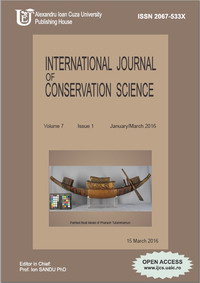
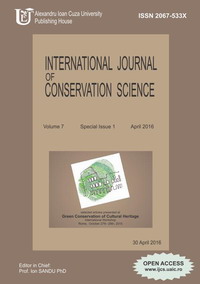
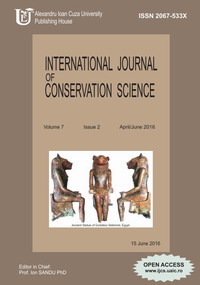
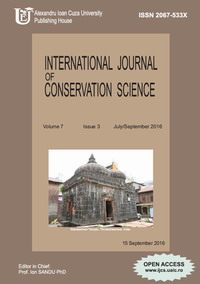
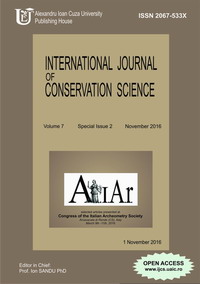
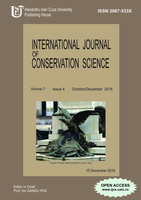
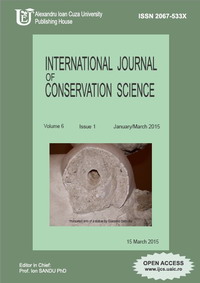
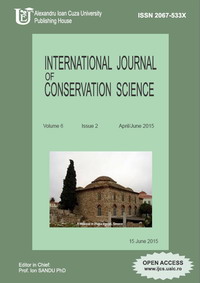
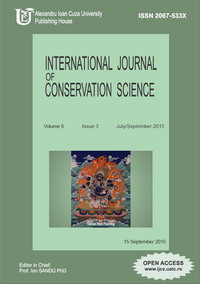
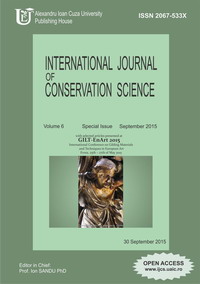
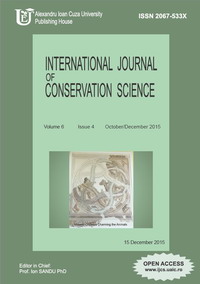
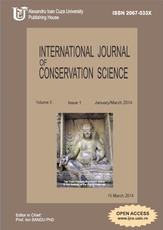
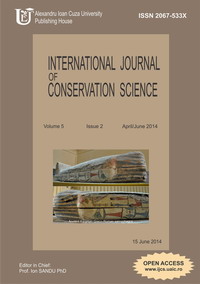
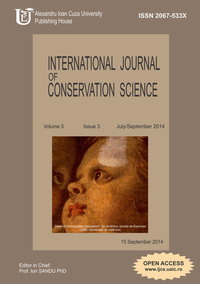
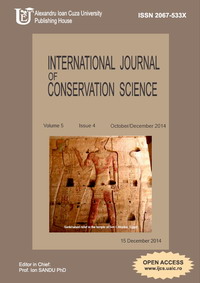
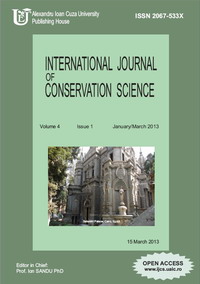
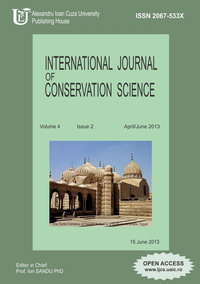
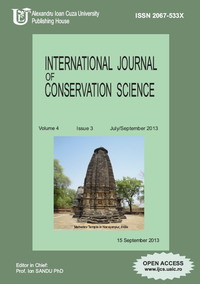
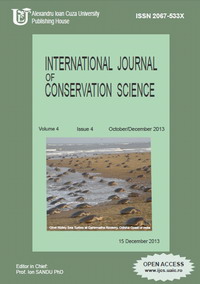
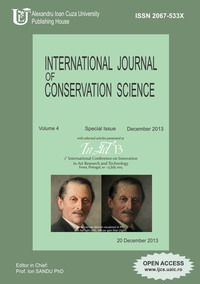
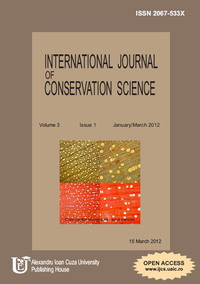
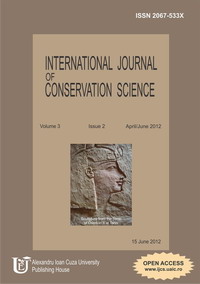
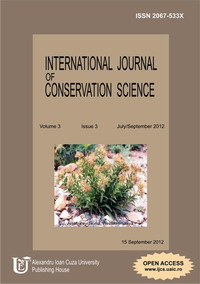
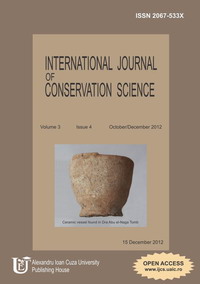
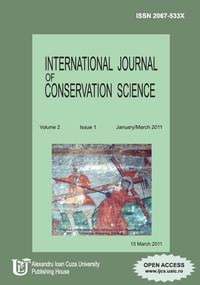
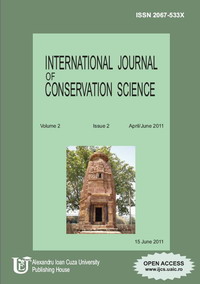
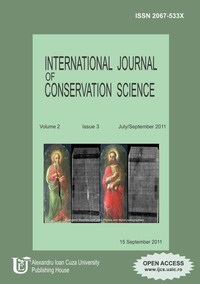
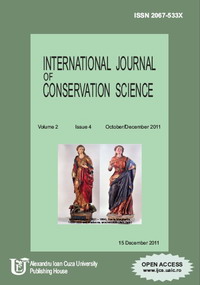

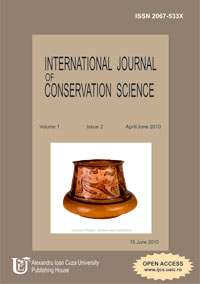
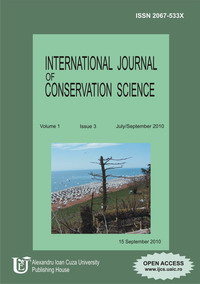
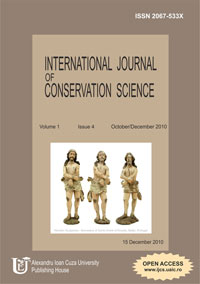
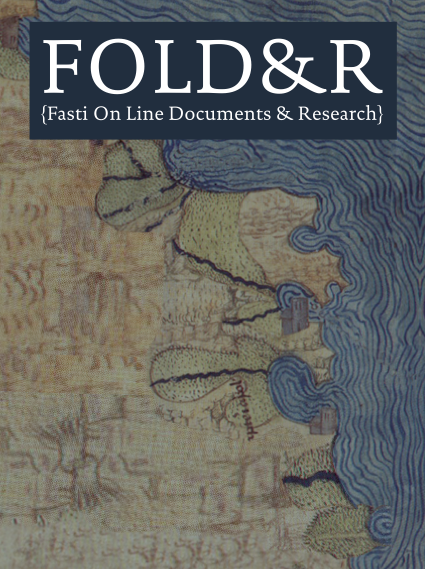






![[Arma Mars logo]](http://www.mcbishop.co.uk/images/mars.gif)







































